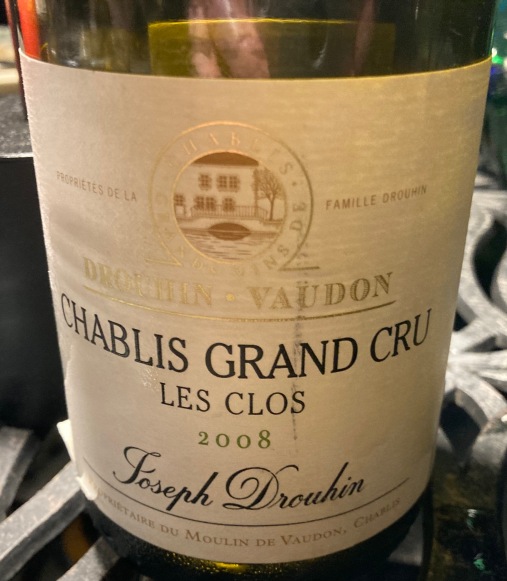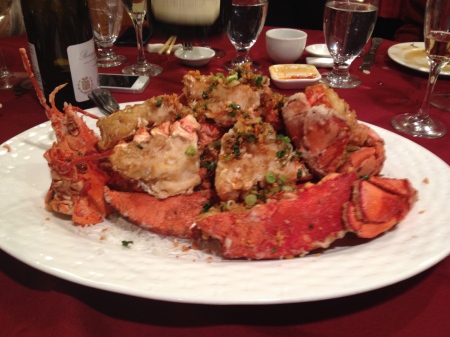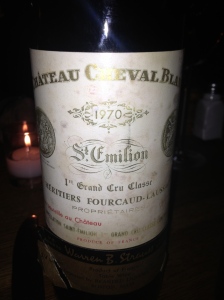Sometimes I think that wine producers do not make the best wine they can but make the wine which is easiest to make and easiest to sell. It is easier to make Chianti if you add international grapes and put it in barriques. In California, it is easier to make a wine with 15% alcohol. Just before writing this article I read a very interesting post by Alice Feiring entitled Death of French Wine (as we know it) www.alicefeiring.com. The French are also a part of this and Alice calls it a struggle between “real wine vs. fake wine.”
Which brings me to the subject of this article, Cork versus Alternate Closures, in particular screw caps. Are screw caps used because they make the wine better or are they used because they are easier, less expensive, and do not allow the wine develop in the bottle so that it always tastes as if it has been just bottled?
The Wine Media Guild did a Cork vs. Alternate Closures tasting last month. A few years ago they did a similar tasting and one of our members, Jonathan Levine, had the foresight to take and save the unopened bottles so that we could do the tasting again. I missed it the first time as I was in Italy so I was looking forward to this one.

Michel Laroche
The tasting sheet for the event had the wine with the cork first followed by the wine with the screw cap. The speaker, Michel Laroche of Domaine Laroche, said it should be the other way around so we changed the order; I will get back to the reason for this later.
Domaine Laroche is a name very well known in Chablis. They are both a négociant house and an estate. Michel runs the family business and has been responsible for its development. He introduced the screw cap into Chablis and for a while in the US you could get his Chablis with a cork or a screw cap. Now I believe all of his Chablis that comes to the US has a screw cap. In France there is more resistance to the screw cap but he believes that they will come around, especially the restaurants.
The big advantage to the screw cap is that the wine in the bottle will “never” be “corked” and have that wet newspaper and cardboard smell and taste that does not go away. This is caused by 2, 4, 6, Trichloroanisole, better known simply as TCA. Wine can be infected with TCA that is in the barrels and in the cellar including the walls and ceiling, but TCA in the cork seems to get all the blame. It is a big problem and at least 10-15% of all wines are corked. The other advantages are that the screw cap is easier to open and the wine will not become oxidized.
But what is given up in return is that every bottle tastes exactly the same as when it left the winery. Christian Moreau, a well known producer of Chablis, said at a recent Chablis seminar that I attended “… Chablis will taste different from vintage to vintage and even bottle to bottle”. This is true for vintage to vintage and for wines with a cork, but not those with a screw cap. With a screw cap, the bottles will all taste the same–too young and too fresh–just the way they left the winery.
Is this what Mr. Laroche intended for his wines? Wines that will not develop in the bottle and not have those nuances and character that give a wine its personality.
Does older wine with a cork become oxidized? If you drink older wine that has a cork in it does it mean you must like oxidized wine? I do not think so. All of the Chablis at the tasting were from the 2002 vintage and not one of them had even a hint of oxidation. At a dinner some months ago I had the Rene & Vincent Dauvissat 1993 Chablis Les Clos and it was showing no signs of oxidation.

The wines of Domaine Laroche
As I tasted through the wines in every case I liked the wine with the cork better- I even tried them blind and still liked the wines with the cork better. The difference was slight with the regular Chablis but became more pronounced in the premier cru and grand cru wines. There was a very big difference in the grand cru Les Blanchots screw cap and cork and the biggest difference in the grand cru Les Clos screw cap and cork. These two wines had developed into classic Chablis thanks to the cork. One bottle of the les Blanchots was corked – I do not know if Mr. Laroche put it in to prove a point? (At the WMG we always have two bottles of each wine.)
In fact when we voted for which wines we liked better screw cap or cork, even Mr. Laroche voted for the Les Clos with the cork. Mr. Laroche rightly changed the order of the wines because the screw cap would be lighter and fresher and less developed than the one with the cork. If the wine with the cork was tasted first, being more developed, it would overwhelm the screw cap bottle.
I have tasted a number of wines with screw caps, synthetic corks, and with glass stoppers in the last few years. Mr. Laroche believes that a wine with the synthetic cork will pick up the odors from it if the wine is kept for a period of time. With a screw cap, you can have s similar problem, the wine coming into contact with a “metallic substance.” Mr. Laroche said that if a “natural substance” is used between the cap and the wine, this problem will not occur. As for a glass stopper I once asked an Italian winemaker why he stopped using them and he said that he was afraid the glass might crack and some might fall in the bottle. If TCA can be present in the barrels and in the cellar walls and ceiling, is it then possible to get a corked wine with a screw cap?
My conclusion is that if a wine is meant to taste fresh and youthful just as it did when it was bottled then it might be alright to use another type of closure, the best of which I believe is a screw cap. This would leave the best cork for those wines that are meant to age and develop their character and personality in the bottle. Wine is a living thing and needs to develop in the bottle. Does anyone really what to drink a wine right off the bottling line?

Members of the WMG tasting the wines
Here is how the WMG members voted on the wines.
Wine Media Guild of NY October 5, 2011
Corkvs. Alternate Closures Part II
Speaker: Michel Laroche, Domaine Laroche
Number = number of preference votes in 2011
BOLD indicates the wine was the preferred bottle in 2007.
** indicates “strongly preferred” In 2007
WHITE WINES
~~~~~~~~~~~~~~~~~~~~~~~~~~~~~~~~~~~~~~~~~~~~
14 Chandon Prestige Etoile Brut, MV Cork
5 Chandon Prestige Etoile Brut, MV Crown Cap
1 No preference
I voted for the cork on all three of the Chardon sparkling wines.
9 Chandon Prestige Etoile Rose, MV Cork
5 Chandon Prestige Etoile Rose, MV Crown Cap
2 No preference
10 Domaine Laroche Chablis Saint Martin 2002 Cork
12 Domaine Laroche Chablis Saint Martin 2002 Screw Cap **
1 No preference
4 Domaine Laroche Chablis Premier Cru les Vaudevey 2002 Cork
17 Domaine Laroche Chablis Premier Cru les Vaudevey 2002 Screw Cap **
1 No preference
16 Domaine Laroche Chablis Grand Cru les Blanchots 2002 Cork 8 Domaine Laroche Chablis Grand Cru les Blanchots 2002 Screw Cap
1 No preference
16 Domaine Laroche Chablis Grand Cru les Clos 2002 Cork
5 Domaine Laroche Chablis Grand Cru les Clos 2002 Screw Cap
1 No preference
On the wines listed below I found only a very slight difference
4 Jean-Claude Boisset Bourgogne Chardonnay 2005 Cork
9 Jean-Claude Boisset Bourgogne Chardonnay 2005 Screw Cap
4 No preference
4 Jean-Claude Boisset Hautes Cotes de Nuits Blanc 2005 Cork
7 Jean-Claude Boisset Hautes Cotes de Nuits Blanc 2005 Screw Cap
4 No preference
RED WINES
9 Jean-Claude Boisset Bourgogne Pinot Noir 2005 Cork **
2 Jean-Claude Boisset Bourgogne Pinot Noir 2005 Screw Cap
3 No preference
7 Martin Ray Cabernet Sauvignon Tri County 2002 Cork
7 Martin Ray Cabernet Sauvignon Tri County 2002 Diam Cork **
1 No preference

 Appetizer — We started with some small appetizers including taramasalata with pita bread and breadsticks.
Appetizer — We started with some small appetizers including taramasalata with pita bread and breadsticks. With the appetizer we had Champagne Mangin Et Fils Brut Natural made from 100% Pinot Meunier from vineyards in Leuvrigny and Moussy with limestone, clay and marl soil. During the harvest the grapes are quickly brought to the press room. After the first fermentation the wines are bottled and stored in the cellars so the second fermentation occurs. The wine is aged in the cellars for several years before being riddled by hand and disgorged. There is no dosage. They remain in the cellar for a few more months before release. It has intense effervescence and hints of quince, grapefruit, dried flowers, hazelnuts and a touch of honey.
With the appetizer we had Champagne Mangin Et Fils Brut Natural made from 100% Pinot Meunier from vineyards in Leuvrigny and Moussy with limestone, clay and marl soil. During the harvest the grapes are quickly brought to the press room. After the first fermentation the wines are bottled and stored in the cellars so the second fermentation occurs. The wine is aged in the cellars for several years before being riddled by hand and disgorged. There is no dosage. They remain in the cellar for a few more months before release. It has intense effervescence and hints of quince, grapefruit, dried flowers, hazelnuts and a touch of honey. Xiao Cong Ban Doufu (scallion & tofu salad), from Shandong Province — A cool and refreshing salad with fresh tofu marinated with scallions, soy sauce and sesame oil.
Xiao Cong Ban Doufu (scallion & tofu salad), from Shandong Province — A cool and refreshing salad with fresh tofu marinated with scallions, soy sauce and sesame oil. Liang Ban Lian-ou (lotus root salad), from Northwestern China. Fried tofu with lotus root, red onions and edamame. Roger said that this is typically made with red chili peppers but he substituted red onions.
Liang Ban Lian-ou (lotus root salad), from Northwestern China. Fried tofu with lotus root, red onions and edamame. Roger said that this is typically made with red chili peppers but he substituted red onions. Dan Dan Mian (dan-dan noodles), street food from Sichuan Province. Fresh wheat noodles with ground pork, preserved vegetables, scallions and peanuts. I must have eaten 3 helpings of this.
Dan Dan Mian (dan-dan noodles), street food from Sichuan Province. Fresh wheat noodles with ground pork, preserved vegetables, scallions and peanuts. I must have eaten 3 helpings of this. Brittan Vineyards Sparkling Wine 2017 Brut Method Champenoise Willamette Valley, Oregon, made from 55% Pinot Noir and 45% Chardonnay. The soil is a mixture of glacial deposits and volcanic material with a predominant presence of broken basalt. This is a full-bodied sparkling wine with hints of citrus fruit, lemon, white flowers and baking spice.
Brittan Vineyards Sparkling Wine 2017 Brut Method Champenoise Willamette Valley, Oregon, made from 55% Pinot Noir and 45% Chardonnay. The soil is a mixture of glacial deposits and volcanic material with a predominant presence of broken basalt. This is a full-bodied sparkling wine with hints of citrus fruit, lemon, white flowers and baking spice. You Mian Jin Sai Rou (fried gluten puff stuffed with minced pork), from Shanghai. This was a sort of meat filled dumpling in a brown sauce.
You Mian Jin Sai Rou (fried gluten puff stuffed with minced pork), from Shanghai. This was a sort of meat filled dumpling in a brown sauce. Qiezi Dun Tudou (eggplant braised with potato), from Northeastern China. The eggplant and potatoes came together beautifully with a garnish of green peas.
Qiezi Dun Tudou (eggplant braised with potato), from Northeastern China. The eggplant and potatoes came together beautifully with a garnish of green peas. Xihongshi Chao Jidan (tomato & scrambled eggs). Roger said that this simple dish of scrambled eggs and tomatoes is probably made in every household in China. The sauce was slightly sweet. Michele promised to make this for me at home soon.
Xihongshi Chao Jidan (tomato & scrambled eggs). Roger said that this simple dish of scrambled eggs and tomatoes is probably made in every household in China. The sauce was slightly sweet. Michele promised to make this for me at home soon.
 Dessert was Figs from the tree in the garden with creme fraiche.
Dessert was Figs from the tree in the garden with creme fraiche. The Fig Tree
The Fig Tree Ice cream with chocolate covered orange rind was the final touch.
Ice cream with chocolate covered orange rind was the final touch.












































































